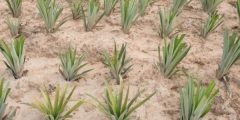Pine is an evergreen tree whose cones contain edible seeds, which can be obtained from pine trees, and are used in many international cuisines in Europe, North America, and Asia, especially in dessert dishes.
Nutritional content of pine nuts
- 135 grams of pine nuts and a few walnuts, and contains 909 calories, 31 grams of protein, 18 grams of carbohydrates, 91 grams of total fat, 5 grams of fiber, 3 milligrams of sodium, 251 grams of magnesium, and 16 milligrams of calcium. And 9.33 milligrams of vitamin E, 4.39 grams of vitamin B3, and 5.5 milligrams of iron. One serving of pine nuts contains calories ranging between 150-200 calories.
- Pine nuts contain a high percentage of protein, dietary fiber, rich fats, and vitamins such as vitamin B2, niacin, riboflavin, and thiamine, and some minerals such as zinc, potassium, and phosphorus.
Health benefits of pine
- Pine contains antioxidants that reduce the risk of the effects of fine chemical molecules called free radicals that help cause premature skin aging.
- Pine reduces constipation; It helps in bowel movement and keeps the colon walls clean.
- Pine nuts contain oleic, a monounsaturated fatty acid, which can control cholesterol levels in the blood.
- Pine plays an important role in improving blood circulation and reducing cramps that accompany menstruation, due to its vitamin K content.
- Pine helps increase the level of hemoglobin in the blood due to it containing iron.
- Pine contains magnesium, which helps relieve muscle cramps, fatigue and tension.
- Eating pine nuts helps suppress appetite and reduce the number of meals eaten daily.
Read also:Plant and animal cover in forests
The most important information about pine oil
One of the most important products that can be obtained is pine oil. It has a very strong taste, and is therefore used in many dishes, especially those that contain vegetables, as well as salads.
Read also:Soil improvement methodsPine oil helps in skin care, and helps in treating several skin problems such as psoriasis, itching, pimples, eczema, and ulcers. It is also included in some cosmetics as massage oil. In addition, it helps improve and protect eye health, and treats urinary tract infections. It works as a disinfectant for boils, wounds and sports injuries, and treats some respiratory problems such as cough.









